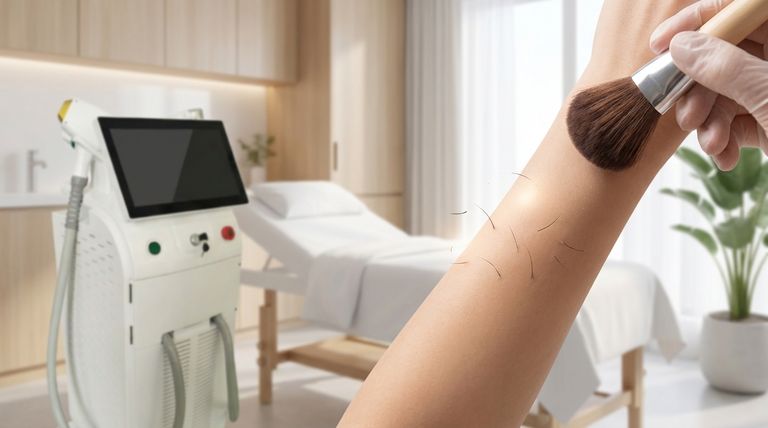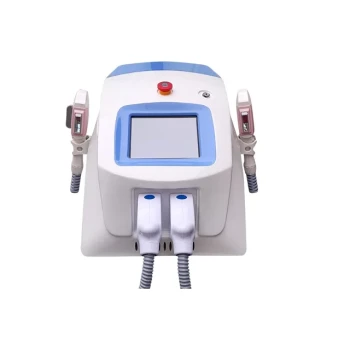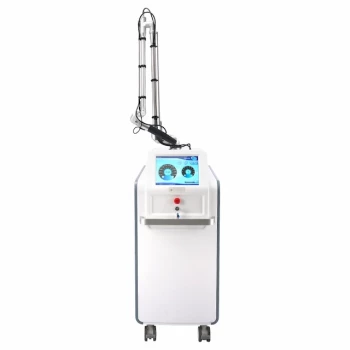Following a diode laser treatment, you can expect the treated hairs to begin falling out, or "shedding," within 5 to 14 days. This shedding is not instantaneous because the laser's primary job is to destroy the hair follicle beneath the skin, not to vaporize the hair shaft itself. The hair that was in the follicle at the time of treatment must then be naturally pushed out by the skin.
The key to understanding laser hair removal is realizing the goal is not to remove the current hair, but to permanently disable the follicle that produces it. The shedding you see is simply the final stage of this process for successfully treated hairs.

The Science Behind the Shedding Process
To manage your expectations, it's crucial to understand what is happening under the surface of your skin after a laser session. The process is a matter of biology, not just technology.
### Targeting the Hair Follicle
A diode laser works by emitting a concentrated beam of light that is absorbed by the melanin (pigment) in the hair. This light energy converts to heat, which travels down the hair shaft to the follicle.
The intense heat damages the follicle, specifically the structures responsible for hair growth. This damage is what prevents or significantly hinders future hair production.
### Why There's a Delay
After the follicle is disabled, the hair shaft within it remains in place. It is no longer growing but is still lodged in the skin.
Over the next one to two weeks, the skin's natural renewal process will gradually push this dead hair out. This can sometimes look like new growth, but it is actually the shedding of the treated hair.
### The Anagen Growth Phase is Key
A laser can only successfully destroy a follicle when the hair is in its active growth stage, known as the anagen phase. During this phase, the hair is physically connected to the follicle, providing a direct pathway for the laser's heat to reach its target.
Hair that is in the resting (telogen) or transitional (catagen) phases will not be affected, as it is no longer firmly connected to the growth cells in the follicle.
Why Not All Hair Falls Out at Once
A common point of confusion is why some hair sheds while other hair in the same area seems unaffected. This is entirely normal and is the reason multiple treatments are necessary.
### The 15% Rule
At any given moment, only about 10-20% of the hair on your body is in the active anagen phase.
This means a single laser session can only effectively target and destroy that small percentage of hair follicles. The rest of the follicles are dormant and will not be impacted by the treatment.
### The Importance of Multiple Sessions
The goal of a full laser hair removal plan is to target hair follicles as they cycle into the anagen phase.
Sessions are typically scheduled 4-8 weeks apart to allow time for a new group of dormant hairs to enter the active growth stage, making them vulnerable to the next laser treatment.
Common Misconceptions to Avoid
Understanding the process helps you avoid common pitfalls and frustrations. The effectiveness of your treatment relies on patience and adherence to the correct protocol.
### Misconception: "The hair is growing back immediately."
The appearance of hair in the week or two following treatment is almost always the shedding of dead hairs, not regrowth. You can often gently exfoliate the area to help this process along, but do not pluck or wax.
### Misconception: "One session should be enough."
As explained by the hair growth cycle, a single session can never treat all the follicles in an area. Completing the full series of recommended sessions is the only way to achieve significant, long-term hair reduction.
### The Critical Role of Post-Treatment Care
Avoid plucking, waxing, or using depilatory creams between sessions. These methods remove the hair from the follicle, meaning there is no pathway for the laser's energy to travel during your next appointment, rendering it ineffective. Shaving is the only recommended method of hair management between sessions.
Making the Right Choice for Your Goal
Setting realistic expectations is fundamental to a positive laser hair removal experience. Your results are directly tied to the biological cycle of hair growth.
- If your primary focus is immediate smoothness: Understand that laser removal is a gradual process. You will see shedding over two weeks, but the ultimate result of smooth skin builds over several months of treatment.
- If your primary focus is long-term reduction: Commit to the full series of 6-8+ treatments as recommended by your technician. This is non-negotiable for targeting all hair follicles as they enter their growth phase.
- If your primary focus is an effective treatment: Do not pluck or wax between sessions. Shaving is acceptable, but the follicle must contain a hair stub for the laser to effectively target it.
Understanding the hair growth cycle is the key to appreciating the laser removal process and achieving your desired results.
Summary Table:
| Key Aspect | Details |
|---|---|
| Shedding Timeline | 5 to 14 days post-treatment |
| Primary Target | Hair follicle (not the hair shaft) |
| Key Growth Phase | Anagen (active growth phase) |
| % of Hair Treated per Session | 10-20% |
| Typical Full Treatment Plan | 6-8+ sessions, 4-8 weeks apart |
Achieve smooth, long-lasting results with professional diode laser technology from BELIS.
Our medical-grade equipment is designed for clinics and premium salons to deliver safe, effective, and comfortable hair removal treatments. By precisely targeting hair follicles, BELIS devices help you provide superior client outcomes and build a reputation for excellence.
Ready to enhance your service offerings? Contact our experts today to discover the right BELIS solution for your business.
Visual Guide

Related Products
- Diode Tri Laser Hair Removal Machine for Clinic Use
- Trilaser Diode Hair Removal Machine for Beauty Clinic Use
- Clinic Diode Laser Hair Removal Machine with SHR and Trilaser Technology
- Diode Laser SHR Trilaser Hair Removal Machine for Clinic Use
- IPL SHR Hair Removal Machine for Permanent Hair Removal
People Also Ask
- Is it safe to do laser every 2 weeks? The Critical Timing for Safe & Effective Results
- Who is not suitable for laser hair removal? A Safety Guide to Assess Your Candidacy
- How often should you get laser hair removal for best results? The 4-6 Week Rule Explained
- What is the best gap between laser hair removal sessions? The 4-6 Week Rule for Optimal Results
- What is the best way to remove hair from sensitive areas? A Guide to Pain-Free, Irritation-Free Results



















